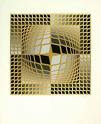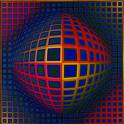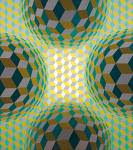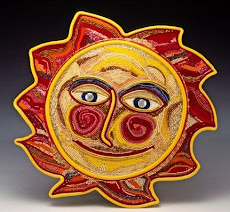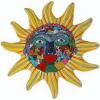


Dear Students and families,
It is hard to believe that we have already been back in school for six weeks! It is great to be back with all of you and I look forward to seeing your smiling faces in class, in the halls and around town.
We are off to a great start in art, and I will now fill you in on our first units of study!
Kindergarteners I am thrilled to have kindergarten students again this year, though my predecessor Laurie Worley, kinder art specialist, did a great job for several years. Waukazoo specialists now have all grade levels at our school.
A great way to introduce kindergarteners to art is to allow them opportunities to explore different media and learn how to use common art tools, such as scissors and paint brushes. Kinders have art on Fridays for 30 minutes, and instruction revolves around the art elements of line, color, shape, pattern and texture. I frequently use children's literature to enhance lessons, and we stick to topics that are familiar to small children and their lives. Another part of the art program is looking at works of art-teaching children to keep improving their visual perception, learn to focus closely, and to develop their opinions and ideas about what they see. This is a good way for students to develop their vocabulary and to begin to build a sense of aesthetics. At this age, it isn't appropriate to provide much guided instruction to kids, who express themselves as a natural way of communicating and storytelling. Kids vary greatly in their abilities, coordination and interests at this age. We will be playing with beautiful fall leaves next week, doing rubbings and prints of them. Encourage your children to collect leaves and other natural things around your yard and make rubbings from them. Newspaper and peeled crayons work well for this.
First Graders: The first unit fits right in with our fall holiday featuring monsters and things that go bump in the night. My favorite children's book, WHERE THE WILD THINGS ARE, by Maurice Sendack, inspired this unit on Wild Things, during which we make character puppets, huge and hideous Group Monsters, and hear stories about brave children and monsters who aren't so monstrous after all. Mr. Lyon's class is featured at right in the slideshow of Wild Things puppets. As you can see, there was much roaring, clawing and eye rolling during this class--it is a good thing Mrs. Art was brave enough to take pictures! :)
















 We recently looked at some nonobjective art featuring the art element of line, and discussed the differences in its
We recently looked at some nonobjective art featuring the art element of line, and discussed the differences in its  expressive quality in a painting by Franz Kline and another by Piet Mondrian. As you can see, Mondrian makes very organized compositions and uses very straight lines, while Franz Kline paints quickly, intuitively, and with a feeling of playfulness and spontaneity. We used pairs of words to illustrate the differences between the works. Students explored line through drawings using oil pastel, marker and colorstick.
expressive quality in a painting by Franz Kline and another by Piet Mondrian. As you can see, Mondrian makes very organized compositions and uses very straight lines, while Franz Kline paints quickly, intuitively, and with a feeling of playfulness and spontaneity. We used pairs of words to illustrate the differences between the works. Students explored line through drawings using oil pastel, marker and colorstick.


